
Janet Gaynor was an American film, stage and television actress.

Heaven Can Wait is a 1943 Technicolor American supernatural comedy film produced and directed by Ernst Lubitsch. The screenplay was by Samson Raphaelson based on the play Birthday by Ladislaus Bus-Fekete. The music score was by Alfred Newman and the cinematography by Edward Cronjager.
The year 1938 in film involved some significant events.
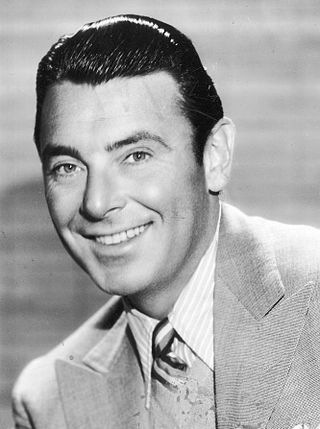
George Brent was an Irish-American stage, film, and television actor. He is best remembered for the eleven films he made with Bette Davis, which included Jezebel and Dark Victory.

Simone Thérèse Fernande Simon was a French film actress who began her film career in 1931. She is perhaps best remembered for her role in the American horror film Cat People, and its sequel The Curse of the Cat People.
AFI's 100 Years...100 Stars is the American Film Institute's list ranking the top 25 male and 25 female greatest screen legends of American film history and is the second list of the AFI 100 Years... series.
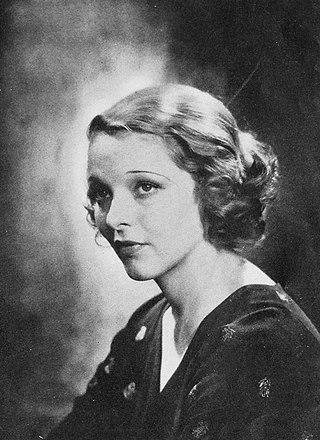
Sally Blane was an American actress who appeared in more than 100 movies.

Irene Maud Lentz, also known mononymously and professionally as Irene, was an American actress turned fashion designer and costume designer. Her work as a clothing designer in Los Angeles led to her career as a costume designer for films in the 1930s. Lentz also worked under the name Irene Gibbons.

Sara Haden was an American actress of the 1930s through the 1950s and in television into the mid-1960s. She may be best remembered for appearing as Aunt Milly Forrest in 14 of the 16 entries in the Metro-Goldwyn-Mayer Andy Hardy film series.
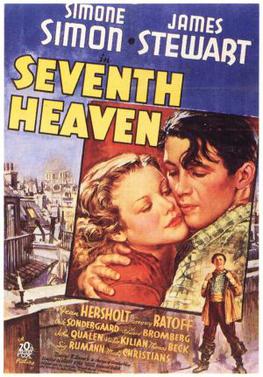
Seventh Heaven is an American romantic drama film released in 1937 by 20th Century Fox, directed by Henry King and starring Simone Simon and James Stewart. The supporting cast features Jean Hersholt, Gregory Ratoff, Gale Sondergaard, and John Qualen.

Born to Be Bad is a 1934 American pre-Code drama film starring Loretta Young and Cary Grant, and directed by Lowell Sherman.

The Story of Alexander Graham Bell is a somewhat fictionalized 1939 biographical film of the famous inventor. It was filmed in black-and-white and released by Twentieth Century-Fox. The film stars Don Ameche as Bell and Loretta Young as Mabel, his wife, who contracted scarlet fever at an early age and became deaf.
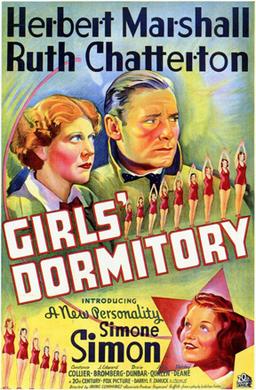
Girls' Dormitory is a 1936 American romance film directed by Irving Cummings based upon the 1934 play Mature by Ladislas Fodor, and adapted for the screen by Gene Markey.

Because of You is a 1952 American drama romance film noir directed by Joseph Pevney and starred Loretta Young and Jeff Chandler. This film was surprising in that it showed a provocative "sexy side" of Miss Young, quite different from her usual dignified brunette "nice girl" part.

Bodil Rosing was a Danish stage and American film actress in the silent and sound eras.
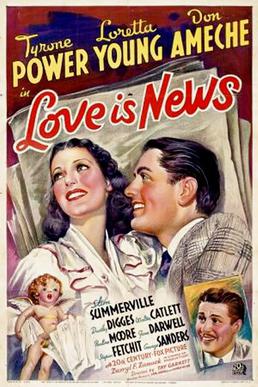
Love Is News is a 1937 American romantic comedy film starring Tyrone Power, Loretta Young, and Don Ameche. The movie was directed by Tay Garnett and was the first film for which Power had top billing. The picture was remade in 1947 as That Wonderful Urge, with Power again and Gene Tierney.

Cafe Metropole is a 1937 American romantic comedy film directed by Edward H. Griffith and starring Loretta Young, Tyrone Power and Adolphe Menjou. It was produced and distributed by 20th Century Fox. The screenplay was based on an original story by Gregory Ratoff who also appears in the film. It is part of the tradition of screwball comedies which was at their height during the decade. It was commercially successful on its release.

All Women Have Secrets is a 1939 American comedy film directed by Kurt Neumann and written by Agnes Christine Johnston. The film stars Virginia Dale, Joseph Allen, Jeanne Cagney, Peter Lind Hayes, Betty Moran and John Arledge. Also appearing briefly in one of her first screen roles is Veronica Lake, billed as Constance Keane.

Celia Kaye is an American actress. She is most famous for her starring role in the 1964 film adaptation of Island of the Blue Dolphins which won her a Golden Globe award.

















